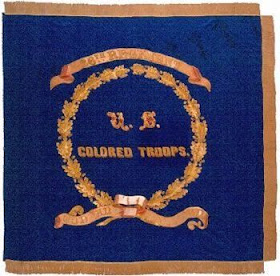At the heart of New York State's Suffrage Movement lies a powerful symbol of women's fight for equality - a political street banner encouraging viewers to “VOTE FOR WOMAN SUFFRAGE AMENDMENT No. 1 NOV 6th.” This banner comes from the Howland Stone Store Museum and dates to 1915, just two years before New York State voters passed Amendment One that granted voting rights to women.
 |
| The Street Banner for 'Votes for Woman Suffrage' |
The banner, said to have hung in Auburn, NY, is possibly linked to Emily Howland, an influential figure in the Suffrage Movement. Emily Howland's pivotal role in the suffrage movement further enhances the banner's historical significance. Born in 1827, Howland’s involvement in the abolitionist movement led her also to champion women's rights, advocating for suffrage. Her lifelong dedication to social justice and women's rights earned her the admiration of prominent suffragists such as Susan B. Anthony and Elizabeth Cady Stanton.
She was honored as a pioneer and leader, financing both the New York State Woman Suffrage Association and the National American Woman Suffrage Association. She spoke at significant events, including the thirtieth anniversary of the Seneca Falls Woman's Rights Convention in 1878 as well as before the New York State legislature in 1894.
 |
| Emily Howland |
This street banner features four white cotton fabric panels that have been painted blue leaving the letters white, the same as the fabric. These panels are double sided and supported onto a net ground. Yellow triangle appear to have been later attached to each corner of the net ground. Below the net hangs a blue cotton valance, scalloped at the edges, and stenciled in white paint with the name of the banner’s manufacturer: ANNIN & Co. NY. Annin & Co is still making flags and it the oldest American flag manufacturer.
After careful vacuuming and gentle cleaning, the creases in the large fields of the banner were humidified and flattened, making the banner easier to read and protecting the painted areas from stress. The blue fabric valance, displaying splits and deterioration, received special attention.
A sheer fabric infused with a conservation grade adhesive was used to stabilize extensive splitting. A fabric matching that of the original was used to support underneath the most damaged area with a sheer netting stitched in place on top.
 |
| (left) The many tears and weak areas; (right) The tears aligned and supported, before areas of loss were filled. |
The New York State Suffrage Movement street banner stands as a timeless testament to the courage and determination of suffragists. With its conservation treatment complete, this banner will continue to inspire and educate, honoring the struggles and achievements of those who paved the way for gender equality.
As we celebrate the suffragists' legacy, the banner remains a poignant symbol of progress and a reminder of the ongoing journey towards an equitable and inclusive society. Its conservation and preservation ensure that future generations can draw inspiration from the bravery and vision of those who came before them.
 |
| The banner rolled onto its storage tube and being walked to the truck. Marilyn Post (left), Linda VanBuskirk (center), Gwen Spicer (right). |







